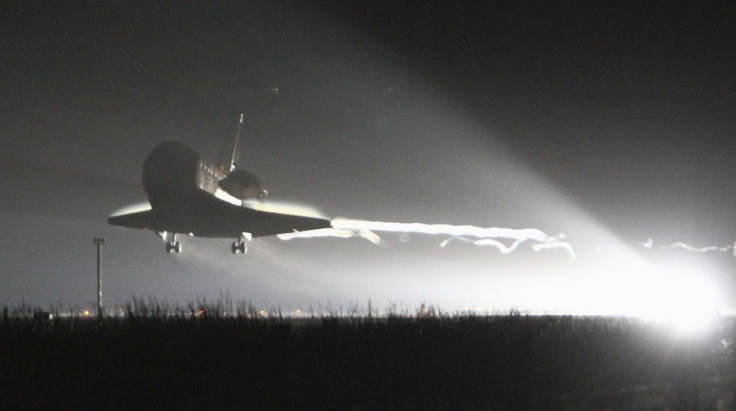Eight surprising dangers in space shuttle flight

With Endeavour's final flight finished and the space shuttle program winding down this summer, memories of past flights return to mind. The early test flights in 1977 featuring the Enterprise riding piggyback on a modified Boeing 747 airliner are easily recalled, as the world got a glimpse of what the new phase in space travel would look like. Dubbed the SOV-101 (Space Orbital Vehicle 101), the Enterprise was a space shuttle designed and used only for test flights.
On April 12, 1981, the space shuttle Columbia was launched from the Kennedy Space Center on Merritt Island, in Florida--the first reusable spacecraft launched into orbit. It was commanded by John Young and piloted by Robert Crippen. It spent two days in space then returned to land on a dry lakebed at Edwards Air Force Base, in California.
During the space shuttle's 30-year history we watched the craft fly up to fix the Hubble Space Telescope's blurry eye, host science experiments in its internal Spacelab, deliver parts and rotate the crews of the International Space Station, and launch or retrieve military and corporate satellites.
We also remember the tragedies. The Challenger shuttle disintegrated just over a minute after launch in 1986, killing all seven aboard. The Columbia was destroyed upon re-entry into the atmosphere in 2003. About 5 percent of the astronauts in both American and foreign missions have died in accidents.
Space travel has always been risky, but few realize just how numerous--and at times odd--the threats can be. Consider this incomplete list:
Woodpeckers. The Space Shuttle Discovery's STS-70 mission in 1995 was delayed because woodpeckers had pecked holes in the foam insulation of the shuttle's external fuel tank. Since then, NASA has placed plastic and inflatable owl decoys around the craft to discourage the birds.
Lightning. Commercial aircraft absorb lightning strikes every day, but the Apollo 12 mission was compromised when two lightning strikes provoked in part by the exhaust plumes created by the spacecraft caused widespread malfunctions in the instrumentation. NASA will not launch a spacecraft if an anvil thunderstorm cloud is visible within five nautical miles of the launchpad.
Micrometeoroids. Tiny particles of less than a gram, traveling at high speed, constantly batter anything in space. The result is something akin to sandblasting. Spacecraft, space suits and satellites must be made of substances that can withstand this onslaught.
O-ring failure. The Challenger tragedy was caused by a faulty seal--a flawed O-ring allowed hot gasses to escape from the shuttle's solid rocket booster and weakened nearby components, leading to the shuttle's disintegration.
Foam debris. A piece of insulation foam that broke away from the external tank of the Columbia space shuttle during launch struck the shuttle's wing and compromised its integrity, preventing it from withstanding the intense heat (1,500 degrees Celsius) of re-entry.
Pogo oscillations. Fluctuations in engine output or fuel flow can cause components to vibrate rhythmically, and if the rhythm matches the resonance frequency of the rocket, the vibrations start to build through positive feedback, which can result in the destruction of the craft. Astronauts need only throttle down momentarily to break the cycle of building vibrations.
Loose equipment. Alan Bean suffered a concussion when a 16mm camera broke loose when his capsule splashed down in 1969, hitting him above the eye.
Software malfunction. The Soyuz TM-6 had to delay its descent to earth in 1988 when its engines shut off prematurely. The Russian cosmonauts initially suspected a failed sensor that had been affected by solar glare, but when this fix failed to solve the problem, the crew decided to orbit the Earth an extra day to investigate. They determined that the software running the engines was trying to execute the program it used to dock with the Mir space station months earlier. The crew reprogrammed the computer and landed without incident.
© Copyright IBTimes 2024. All rights reserved.





















